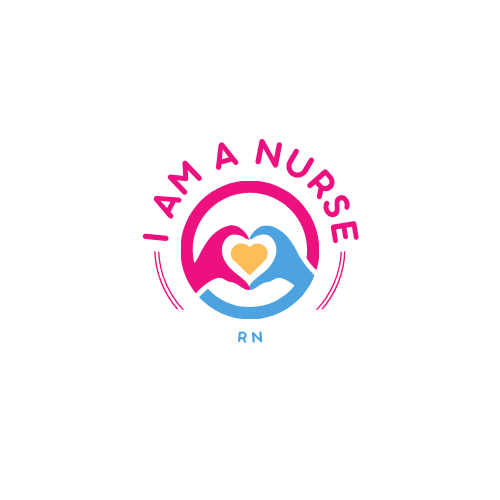
Image Source: FreeImages
Borderline Personality Disorder (BPD) is a mental health condition that affects how a person thinks, feels, and behaves. BPD is a complex and often misunderstood disorder, and many people who suffer from it go undiagnosed. In this comprehensive guide, I will discuss the different types and subtypes of BPD, the symptoms and diagnostic criteria, and the various treatment options available. I will also provide a self-test and quiz to help you determine if you or someone you know may be suffering from BPD.
What is Borderline Personality Disorder (BPD)?
BPD is a mental health condition that is characterized by intense and unstable emotions, impulsive behavior, and a distorted sense of self. People with BPD often struggle with relationships and may have a fear of abandonment. They may also engage in self-destructive behavior, such as substance abuse or self-harm.
BPD is a chronic condition that typically develops in adolescence or early adulthood. The exact cause of BPD is unknown, but it is believed to be a combination of genetics, environmental factors, and brain chemistry.
Types and subtypes of Borderline Personality Disorder
There are several types and subtypes of BPD, each with its own set of symptoms and characteristics. The most common subtypes of BPD are the classic or “acting out” subtype and the quiet or “acting in” subtype.
The classic subtype is characterized by impulsive behavior, anger, and intense emotions. People with this subtype may engage in risky behaviors, such as substance abuse, gambling, or unsafe sex. They may also have difficulty controlling their anger and may have frequent outbursts.
The quiet subtype is characterized by a fear of abandonment, a sense of emptiness, and a tendency to withdraw from relationships. People with this subtype may not engage in impulsive behavior, but they may struggle with self-harm or suicidal thoughts.
Symptoms and diagnostic criteria of Borderline Personality Disorder
The symptoms of BPD can vary from person to person, but some common symptoms include:
- Intense and unstable emotions
- Fear of abandonment
- Impulsive behavior
- Distorted sense of self
- Relationship difficulties
- Self-harm or suicidal thoughts
- Chronic feelings of emptiness
To be diagnosed with BPD, a person must meet certain diagnostic criteria outlined in the Diagnostic and Statistical Manual of Mental Disorders (DSM-5). These criteria include:
- A pattern of unstable relationships, self-image, and emotions
- Impulsive behavior in at least two areas, such as substance abuse, reckless driving, or binge eating
- Recurrent suicidal behavior or self-harm
- Chronic feelings of emptiness
- Intense and inappropriate anger
- Transient, stress-related paranoid ideation or severe dissociative symptoms
Borderline Personality Disorder vs. Bipolar Disorder
BPD is often confused with Bipolar Disorder, as both conditions involve mood swings and impulsive behavior. However, there are some key differences between the two conditions.
Bipolar Disorder is a mood disorder that is characterized by episodes of mania and depression. People with Bipolar Disorder may experience periods of high energy and euphoria (mania) followed by periods of low mood (depression). These episodes can last for days, weeks, or even months.
BPD, on the other hand, is a personality disorder that is characterized by unstable emotions, self-image, and relationships. People with BPD may experience rapid mood swings, but these changes are often triggered by external events and are not as extreme as those seen in Bipolar Disorder.
Understanding the Quiet Borderline Personality Disorder subtype
The quiet subtype of BPD can be difficult to diagnose, as people with this subtype may not engage in impulsive behavior or exhibit the classic symptoms of BPD. However, they may still struggle with feelings of emptiness, fear of abandonment, and a distorted sense of self.
People with the quiet subtype may withdraw from relationships or avoid social situations in an effort to protect themselves from perceived rejection or abandonment. They may also struggle with self-harm or suicidal thoughts.
Borderline Personality Disorder in the DSM-5
BPD is classified as a personality disorder in the DSM-5. Personality disorders are a group of mental health conditions that are characterized by enduring patterns of behavior, cognition, and inner experience that deviate from cultural norms.
The DSM-5 outlines several diagnostic criteria for BPD, including a pattern of unstable relationships, self-image, and emotions, along with impulsive behavior and recurrent suicidal behavior or self-harm.
Borderline Personality Disorder self-test and quiz
If you or someone you know is exhibiting symptoms of BPD, it may be helpful to take a self-test or quiz to determine if further evaluation is needed. A self-test or quiz can provide a preliminary assessment of BPD symptoms and help guide treatment decisions.
There are several online self-tests and quizzes available that can assess BPD symptoms. It’s important to note that these tests are not a substitute for a professional evaluation and should be used only as a screening tool.
Treatment options for Borderline Personality Disorder
BPD is a chronic condition that can be difficult to treat. However, there are several treatment options available that can help manage symptoms and improve quality of life.
Medications used for Borderline Personality Disorder
There are no medications specifically approved for the treatment of BPD, but some medications may be helpful in managing certain symptoms. Antidepressants, antipsychotics, and mood stabilizers are often used to treat depression, anxiety, and mood swings associated with BPD.
It’s important to note that medications should be used in conjunction with therapy and other interventions and should be closely monitored by a healthcare professional.
Therapies and interventions for Borderline Personality Disorder
Psychotherapy is the most effective treatment for BPD. Several types of therapy have been shown to be effective, including Dialectical Behavior Therapy (DBT), Cognitive Behavioral Therapy (CBT), and Schema Therapy.
DBT is a type of therapy that focuses on teaching skills to manage emotions, improve interpersonal relationships, and reduce impulsive behavior. CBT is a type of therapy that focuses on changing negative thought patterns and behaviors. Schema Therapy is a type of therapy that focuses on identifying and changing negative patterns of behavior that develop in childhood.
Saying no to someone with Borderline Personality Disorder
Setting boundaries and saying no can be difficult when dealing with someone with BPD, as they may have a fear of abandonment and may react strongly to perceived rejection. However, setting and maintaining boundaries is essential for maintaining healthy relationships.
When setting boundaries, it’s important to be clear and consistent. It’s also important to validate the other person’s feelings while still maintaining your own boundaries.
Borderline Personality Disorder support groups and resources
Support groups and resources can be helpful for people with BPD and their loved ones. These resources provide a safe and supportive environment where people can share their experiences and learn coping skills.
There are several online support groups and resources available for people with BPD and their loved ones, including the National Education Alliance for Borderline Personality Disorder and the International Society for the Study of Personality Disorders.
Conclusion
BPD is a complex and often misunderstood mental health condition. However, with proper diagnosis and treatment, people with BPD can manage their symptoms and improve their quality of life. If you or someone you know is exhibiting symptoms of BPD, it’s important to seek professional help. A comprehensive evaluation and individualized treatment plan can provide the best chance for recovery and a fulfilling life.
If you or someone you know may be suffering from BPD, please seek help from a mental health professional. Remember, there is hope and help available.




